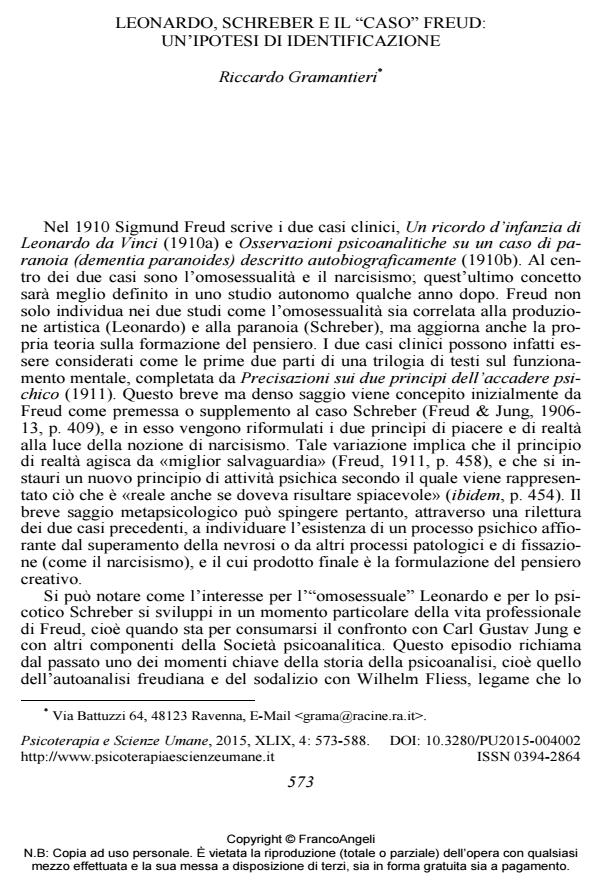Leonardo, Schreber, and the Freud "case": A hypothesis of identification
Journal title PSICOTERAPIA E SCIENZE UMANE
Author/s Riccardo Gramantieri
Publishing Year 2015 Issue 2015/4
Language Italian Pages 13 P. 573-588 File size 72 KB
DOI 10.3280/PU2015-004002
DOI is like a bar code for intellectual property: to have more infomation
click here
Below, you can see the article first page
If you want to buy this article in PDF format, you can do it, following the instructions to buy download credits

FrancoAngeli is member of Publishers International Linking Association, Inc (PILA), a not-for-profit association which run the CrossRef service enabling links to and from online scholarly content.
Leonardo’s and Schreber’s clinical cases are important Freudian studies both written in 1910. The two clinical cases study mainly homosexuality, but they also constitute indirect analysis: the first one about a Renaissance scientist through the biographies and his pictorial work; the second one about a delusional person through his memoirs. Besides, they have activated in Freud an identification process with his subject of study. The similarities between autobiographical experiences can leads to the hypothesis that the formulation of a theory of mental functioning, which is the secondary object of the two cases, can be derived from the self-analysis that Freud performed about a dozen years earlier, and therefore there may be an affinity between the Freudian self-analysis’ writing process and Leonardo and Schreber’s creative processes.
Keywords: Freud, Leonardo da Vinci, mental functioning model, Schreber, self-analysis
- Freud e la rimozione dell'Edipo a Colono Riccardo Gramantieri, in PSICOTERAPIA E SCIENZE UMANE 3/2018 pp.435
DOI: 10.3280/PU2018-003006
Riccardo Gramantieri, Leonardo, Schreber e il "caso" Freud: un’ipotesi di identificazione in "PSICOTERAPIA E SCIENZE UMANE" 4/2015, pp 573-588, DOI: 10.3280/PU2015-004002